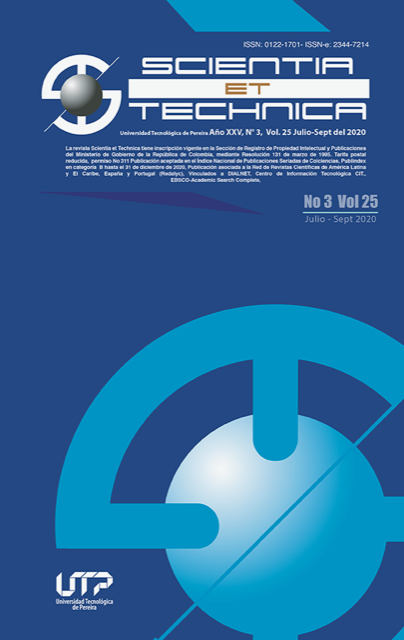Development of a relevance index for the subjects in a study plan - Case study: Systems and Computer Engineering, Universidad Tecnológica de Pereira
DOI:
https://doi.org/10.22517/23447214.24454Keywords:
Educational Data miningAbstract
This document presents the development of an index that aims to quantify, according to some criteria known in graph theory, how relevant a subject is, taking into account its location in the curriculum, its number of credits, its prerequisites and the subjects dependents. The first thing was to model the academic plan using a graph, which considers only two things: the assigned credits and the prerequisites that must be met before taking the subjects. After having this model, graph theory algorithms were applied that allow to measure the importance of a subject with respect to the location in its curricular mesh (Centrality) and allow to give a measure of the importance of the subjects based on academic credits, its prerequisites and subjects depending on it (Neighborhood). It is important to note that the analysis presented is not intended to indicate that one subject is more important than another for the student's professional development, but rather to analyze, in an estimative way, which subjects contribute more to the connectivity of the program and academic flow by this network only taking into account the information found in the curriculum.The result obtained is a composite index, which allows visualizing the relevance degree of the subjects in the study plan.
Downloads
References
S.S. Ray. "Introduction to Graphs", in Graph Theory with Algorithms and its Applications, 2013, Springer, ISBN: 978-81-322-0749-8. Available: https://link.springer.com/ DOI: 10.1007/978-81-322-0750-4
https://doi.org/10.1007/978-81-322-0750-4
S. Guze. "Graph Theory Approach to the Vulnerability of Transportation Networks". Department of Mathematics, Gdynia Maritime University. 12 December 2019. Available: https://www.mdpi.com/1999-4893/12/12/270/htm
https://doi.org/10.3390/a12120270
C. Ding, X. He, P. Husbands, H. Zha, H. Simon. Proceedings of the 25th annual international ACM SIGIR conference on Research and development in information retrieval. Association for Computing Machinery, 2002, New York, USA. Available: https://dl.acm.org/doi/10.1145/564376.564440. DOI: 10.1145/564376.564440
https://doi.org/10.1145/564376.564440
Ulrik Brandes. A faster algorithm for betweenness centrality. Journal of Mathematical Sociology, 25(2):163-177, 2001.
https://doi.org/10.1080/0022250X.2001.9990249
Neo4j. "The Betweenness Centrality algorithm". Neo4j Labs Graph Algorithms library. Available: https://neo4j.com/docs/graph-algorithms
M. Benzi, E. Estrada, C. Klymkoc. "Ranking hubs and authorities using matrix functions". Linear Algebra and Its Applications, Elsevier, 2012.
Downloads
-
Vistas(Views): 483
- PDF Descargas(Downloads): 236
Published
How to Cite
Issue
Section
License
Copyrights
The journal is free open access. The papers are published under the Creative Commons Attribution / Attribution-NonCommercial-NoDerivatives 4.0 International - CC BY-NC-ND 4.0 license. For this reason, the author or authors of a manuscript accepted for publication will yield all the economic rights to the Universidad Tecnológica of Pereira free of charge, taking into account the following:
In the event that the submitted manuscript is accepted for publication, the authors must grant permission to the journal, in unlimited time, to reproduce, to edit, distribute, exhibit and publish anywhere, either by means printed, electronic, databases, repositories, optical discs, Internet or any other required medium. In all cases, the journal preserves the obligation to respect, the moral rights of the authors, contained in article 30 of Law 23 of 1982 of the Government Colombian.
The transferors using ASSIGNMENT OF PATRIMONIAL RIGHTS letter declare that all the material that is part of the article is entirely free of copyright. Therefore, the authors are responsible for any litigation or related claim to intellectual property rights. They exonerate of all responsibility to the Universidad Tecnológica of Pereira (publishing entity) and the Scientia et Technica journal. Likewise, the authors accept that the work presented will be distributed in free open access, safeguarding copyright under the Creative Commons Attribution / Recognition-NonCommercial-NoDerivatives 4.0 International - https://creativecommons.org/licenses/by-nc-nd/4.0/deed.es license.



